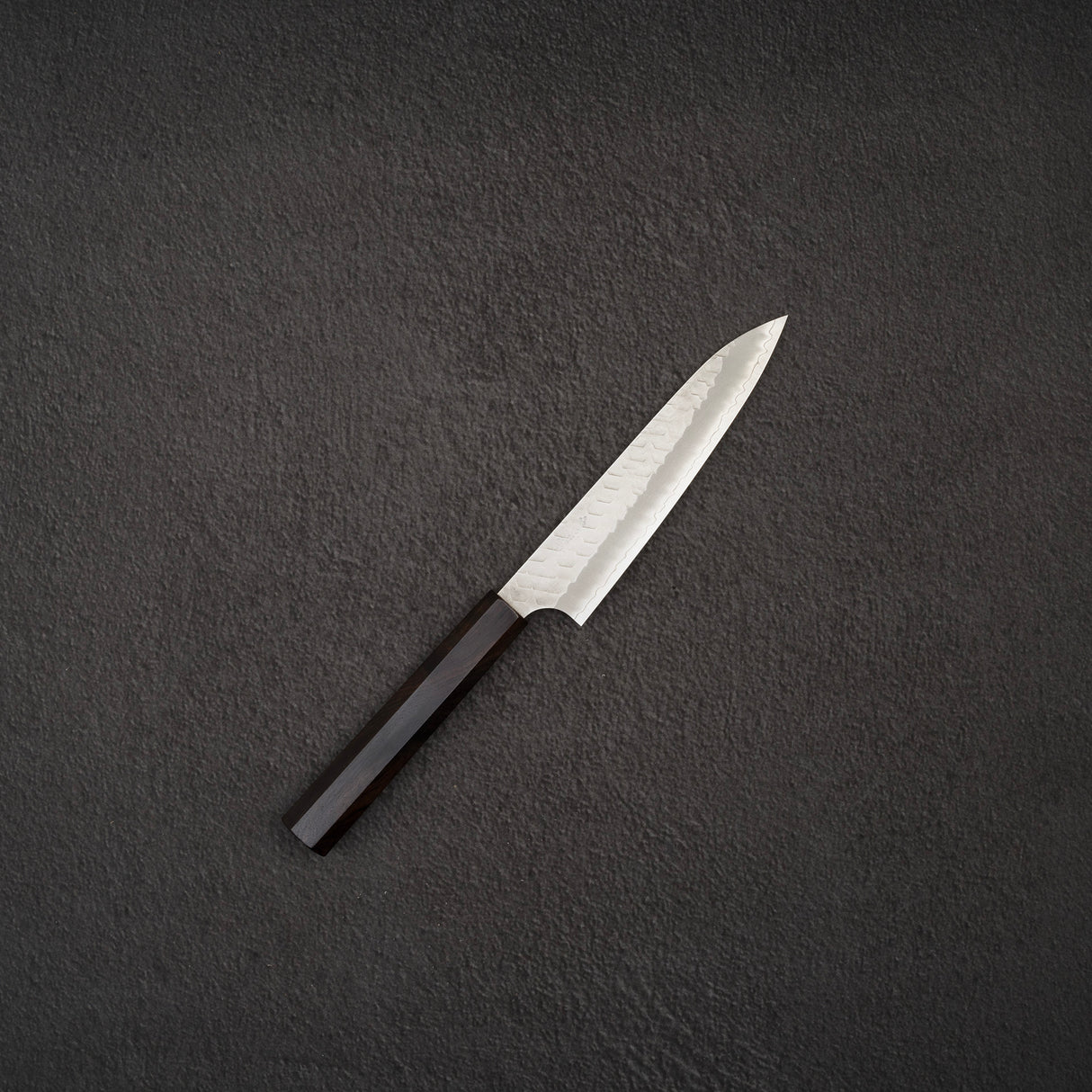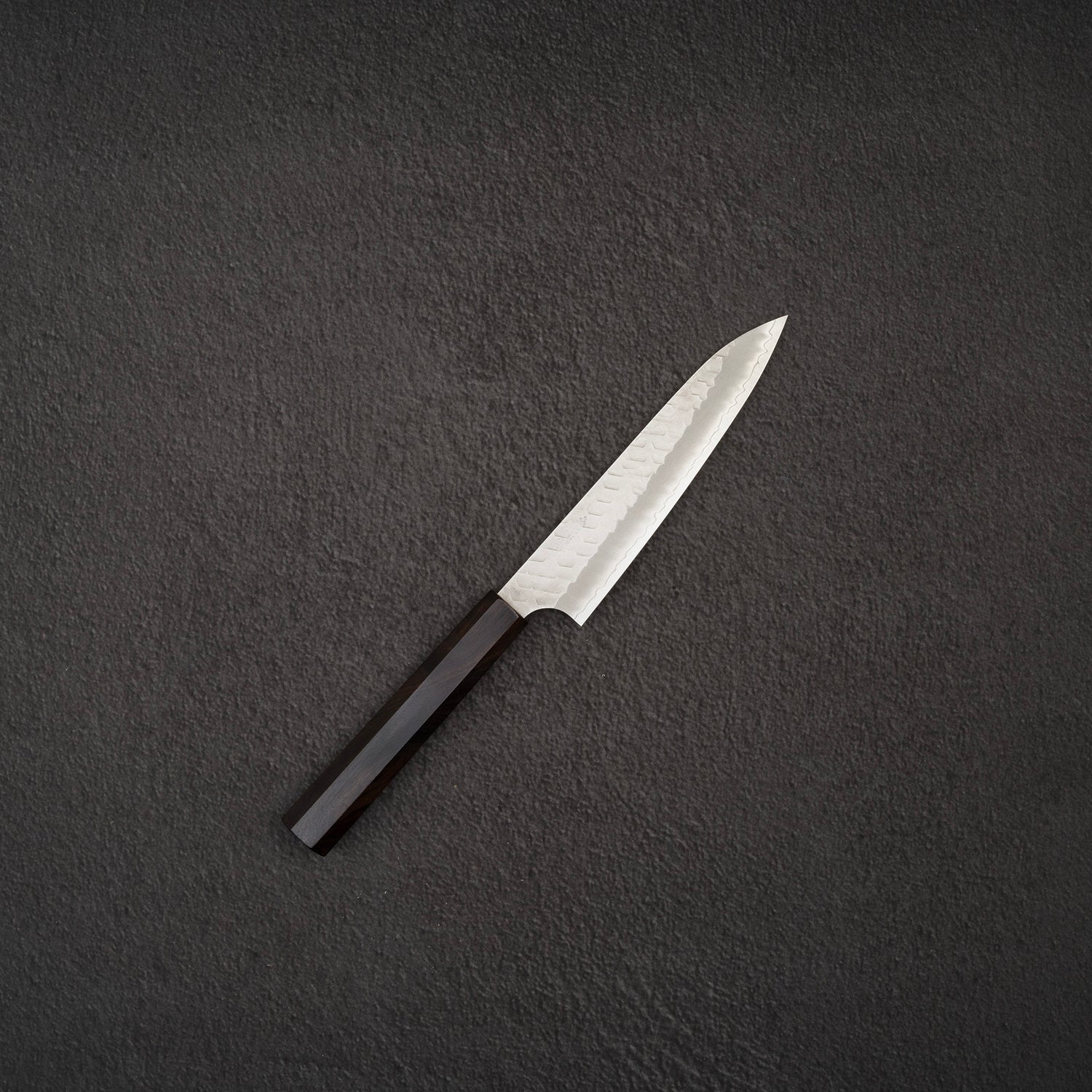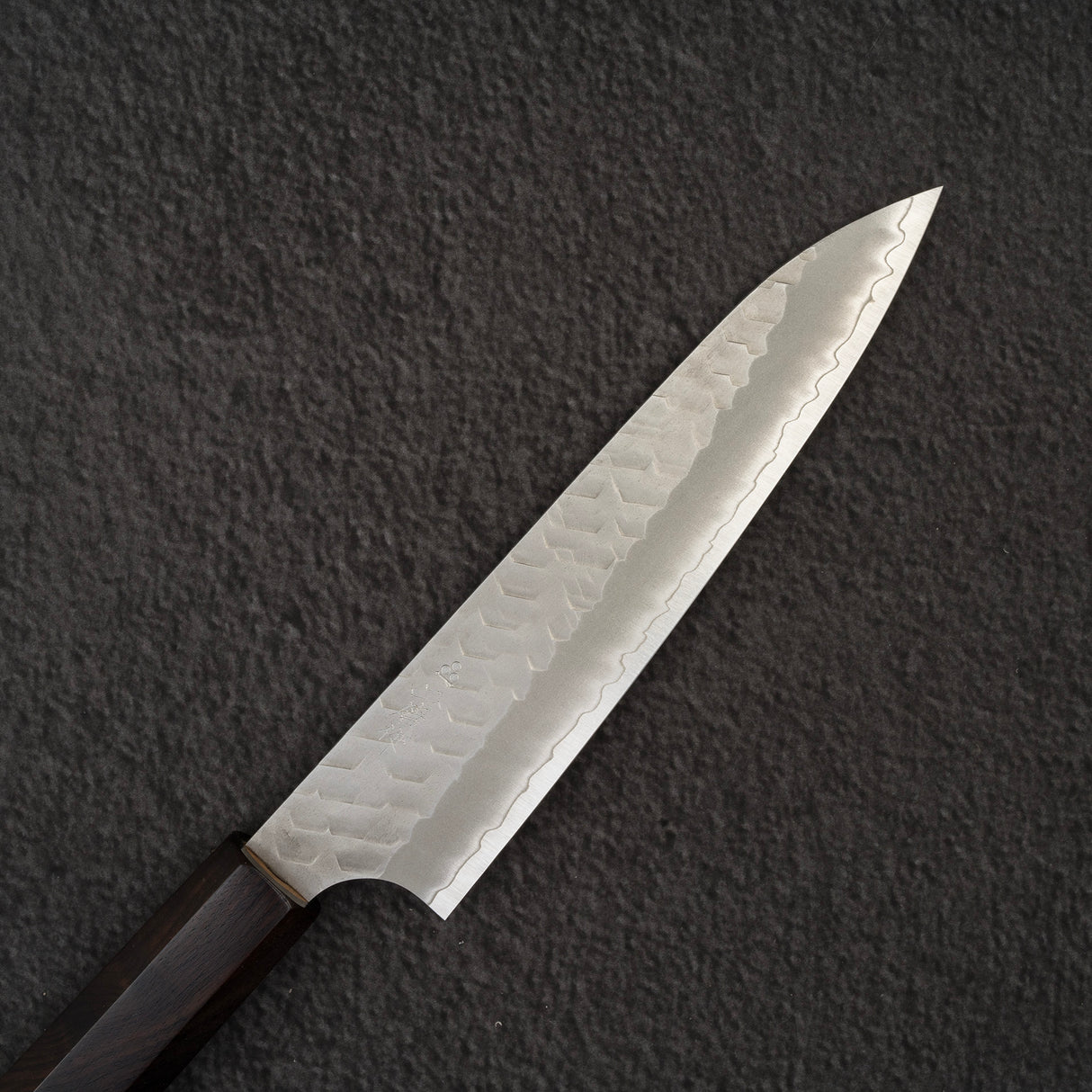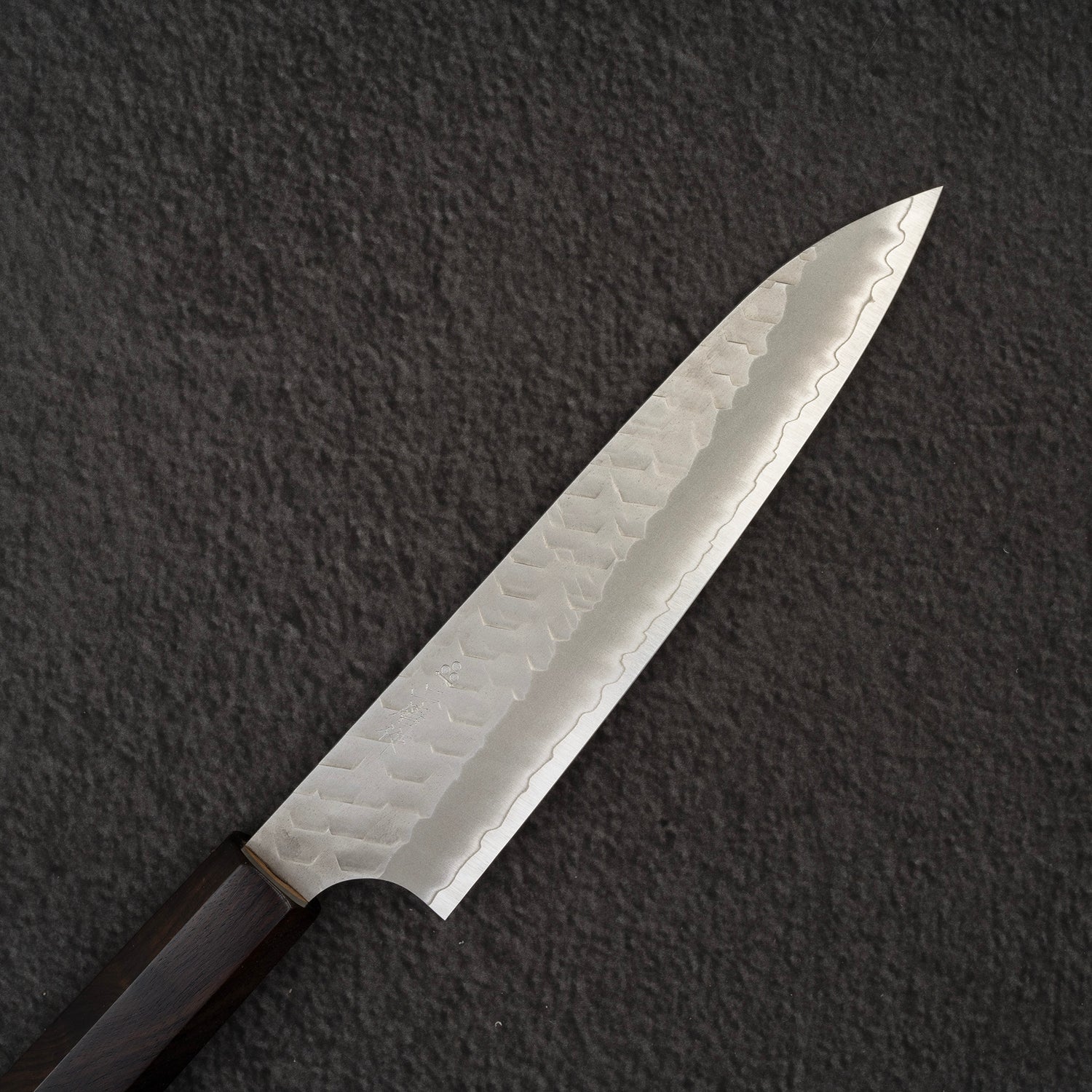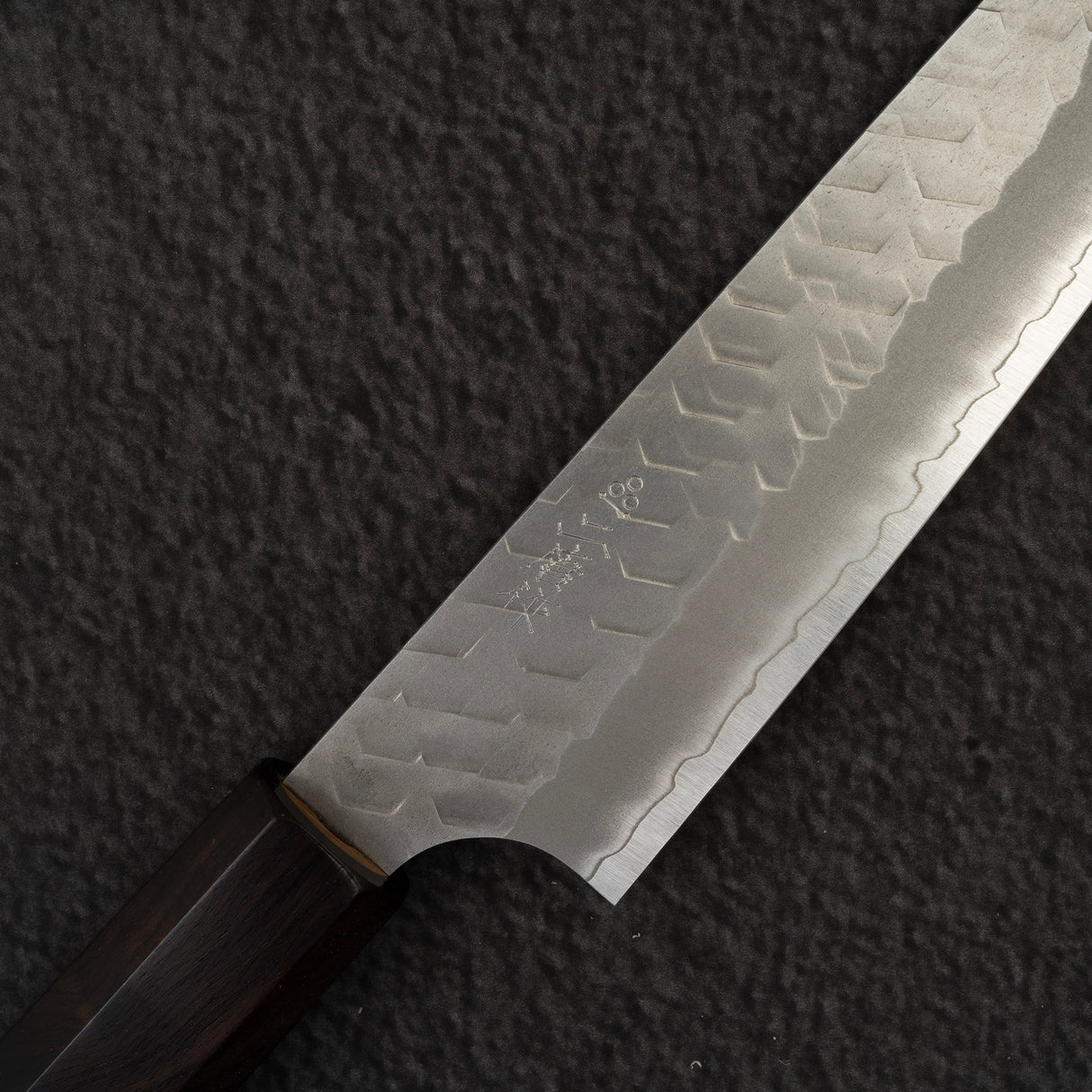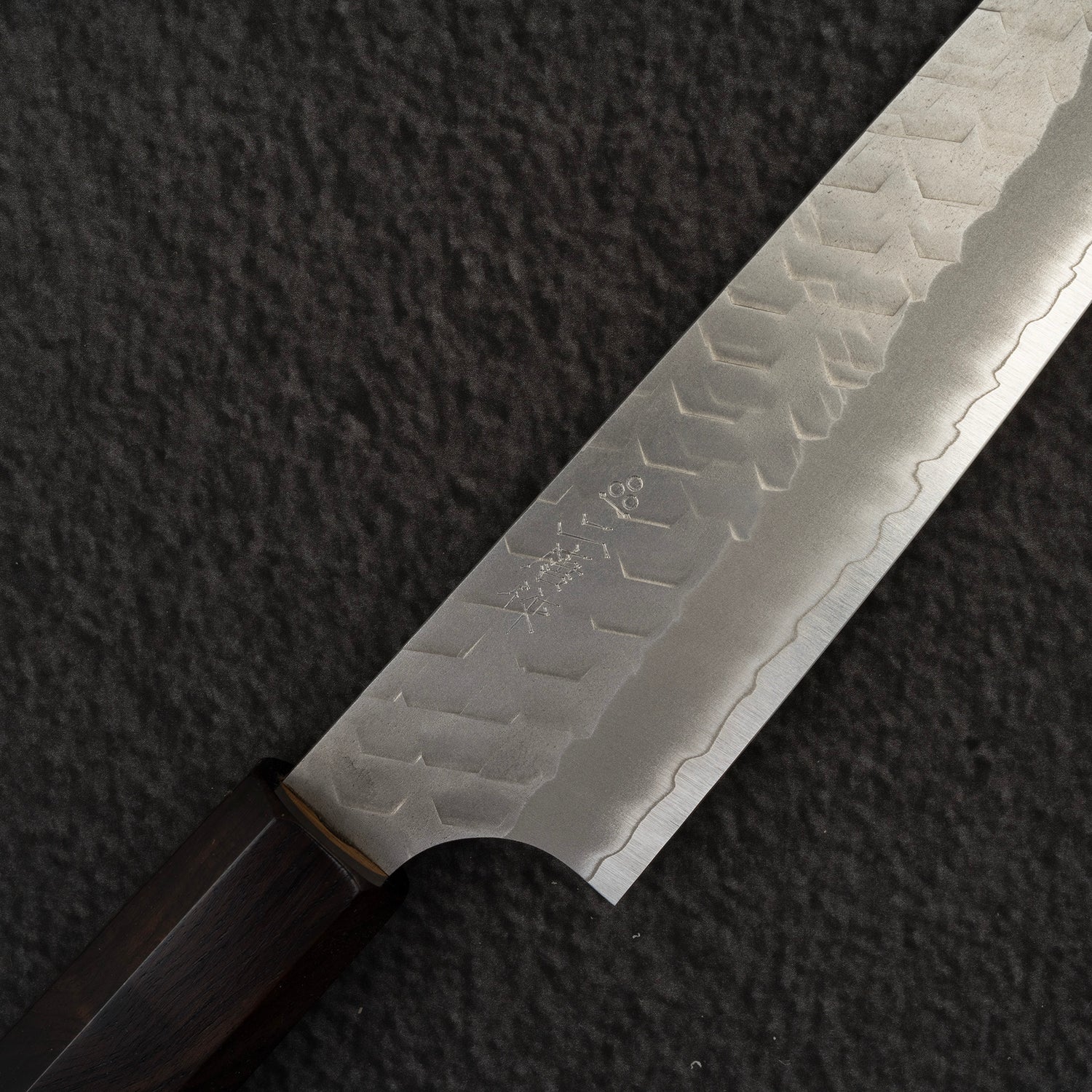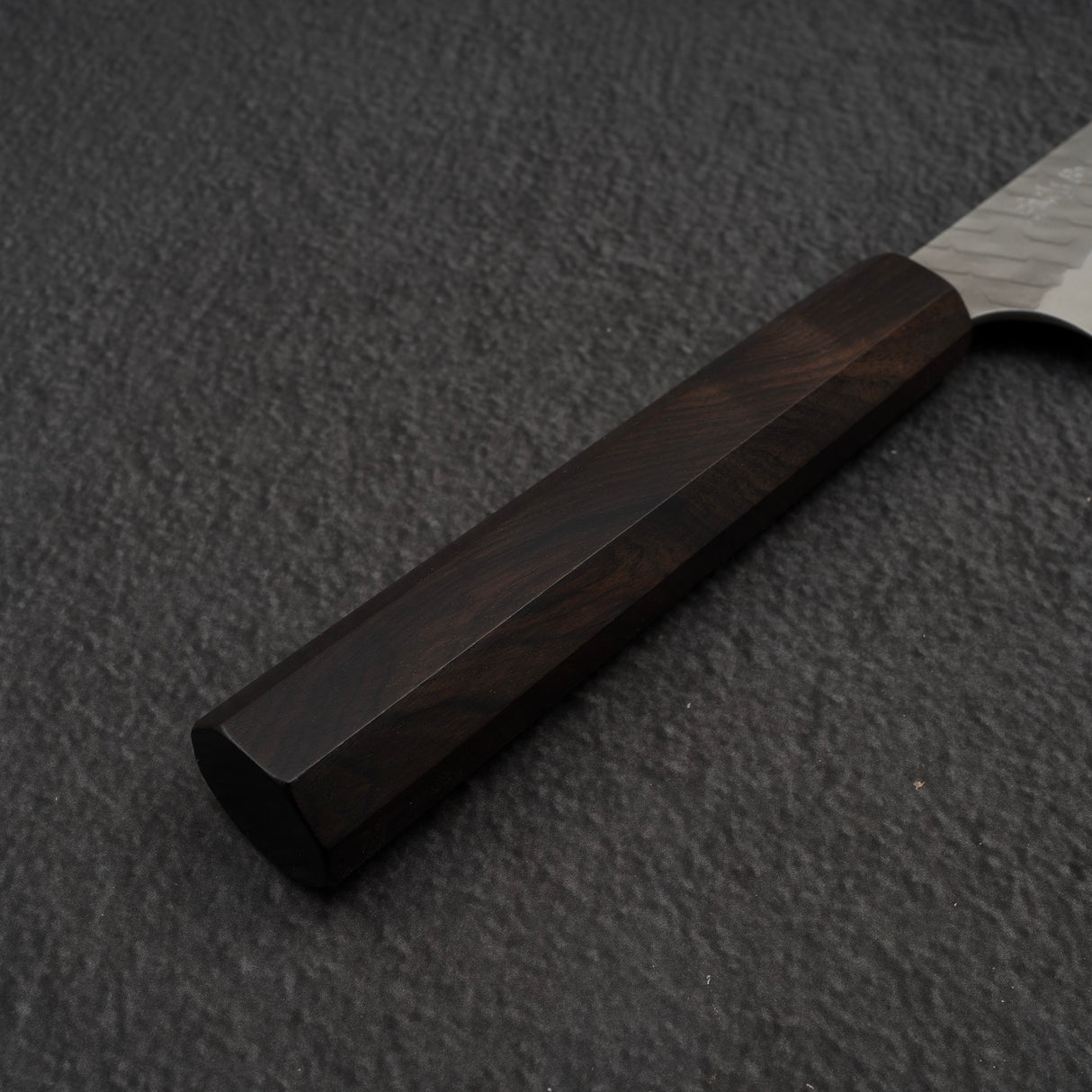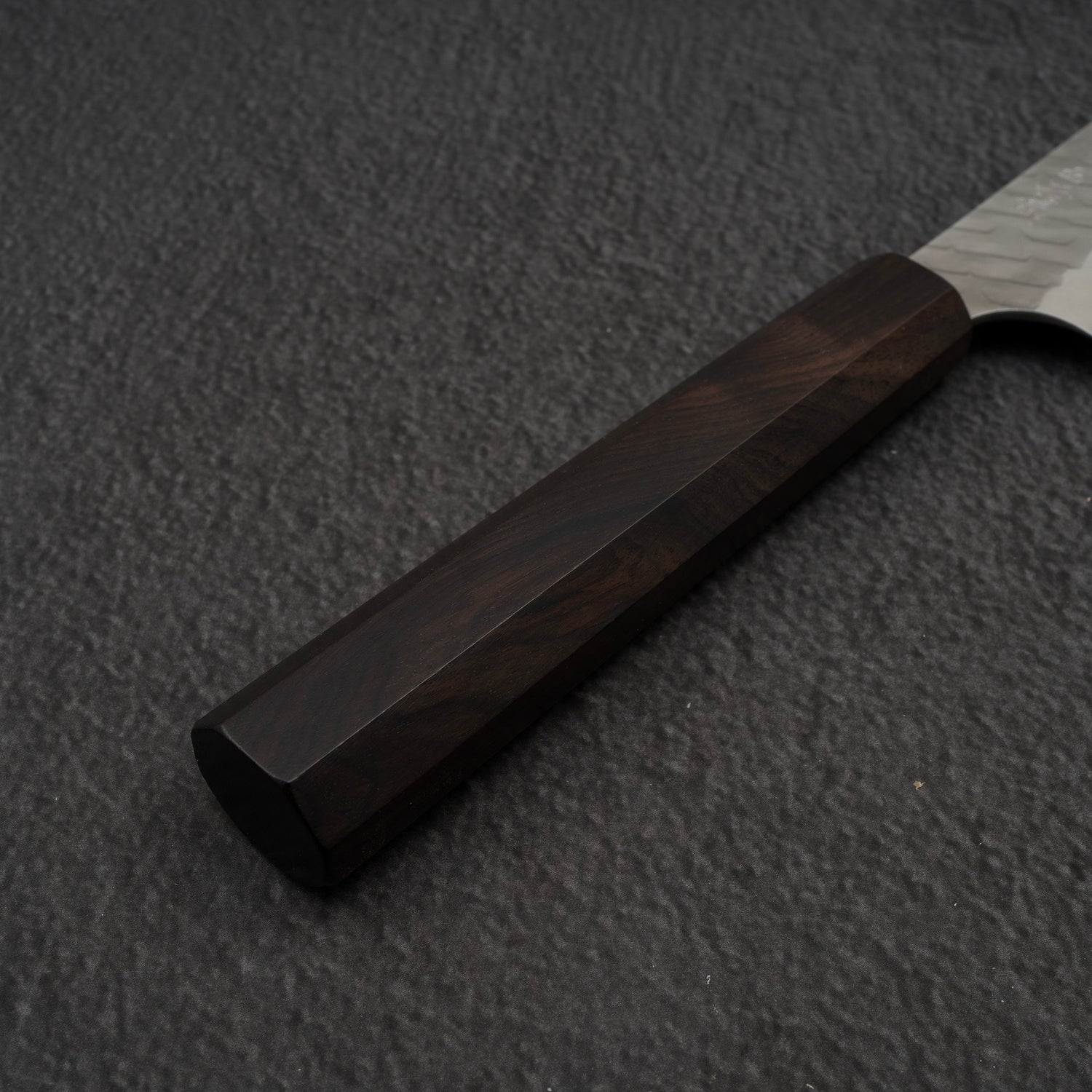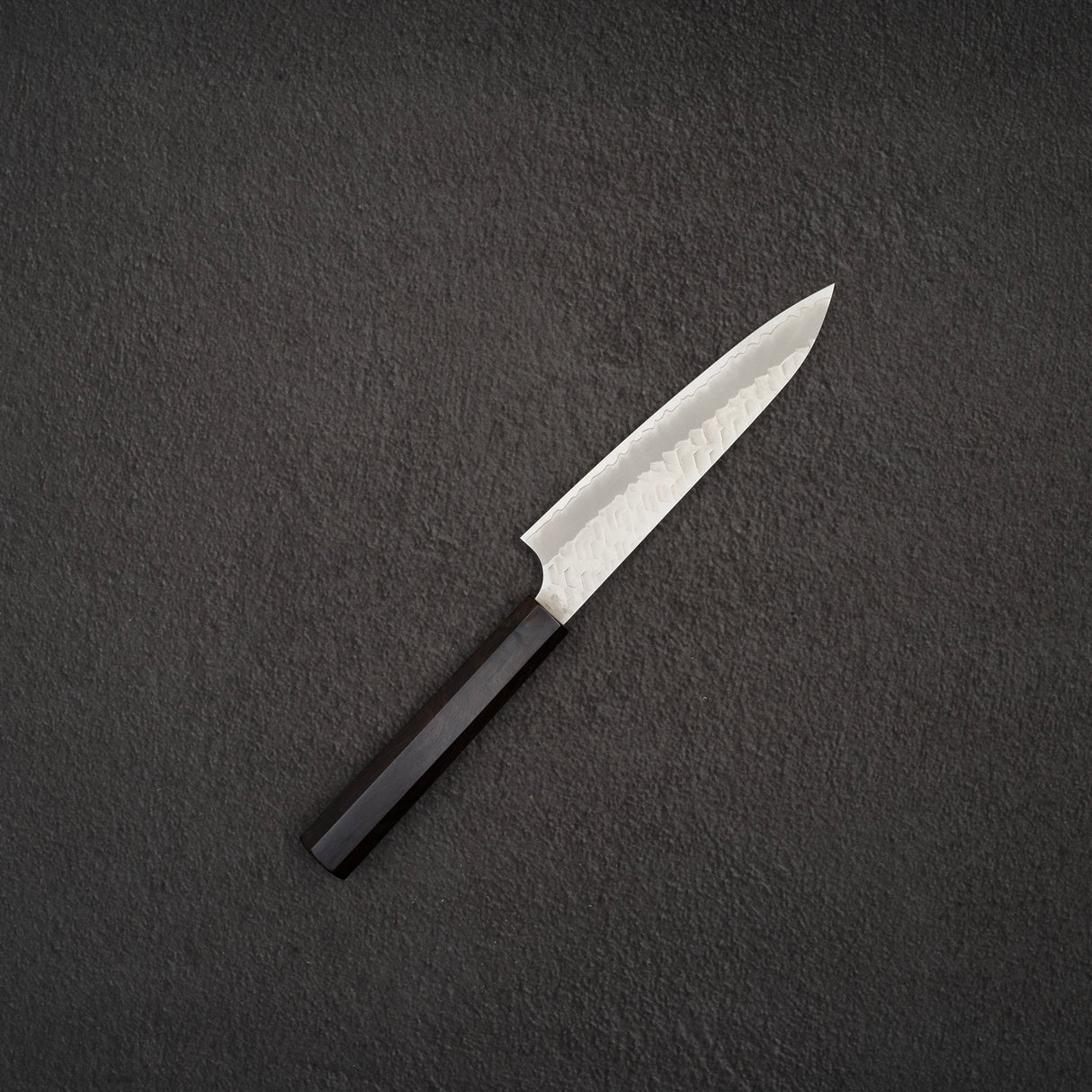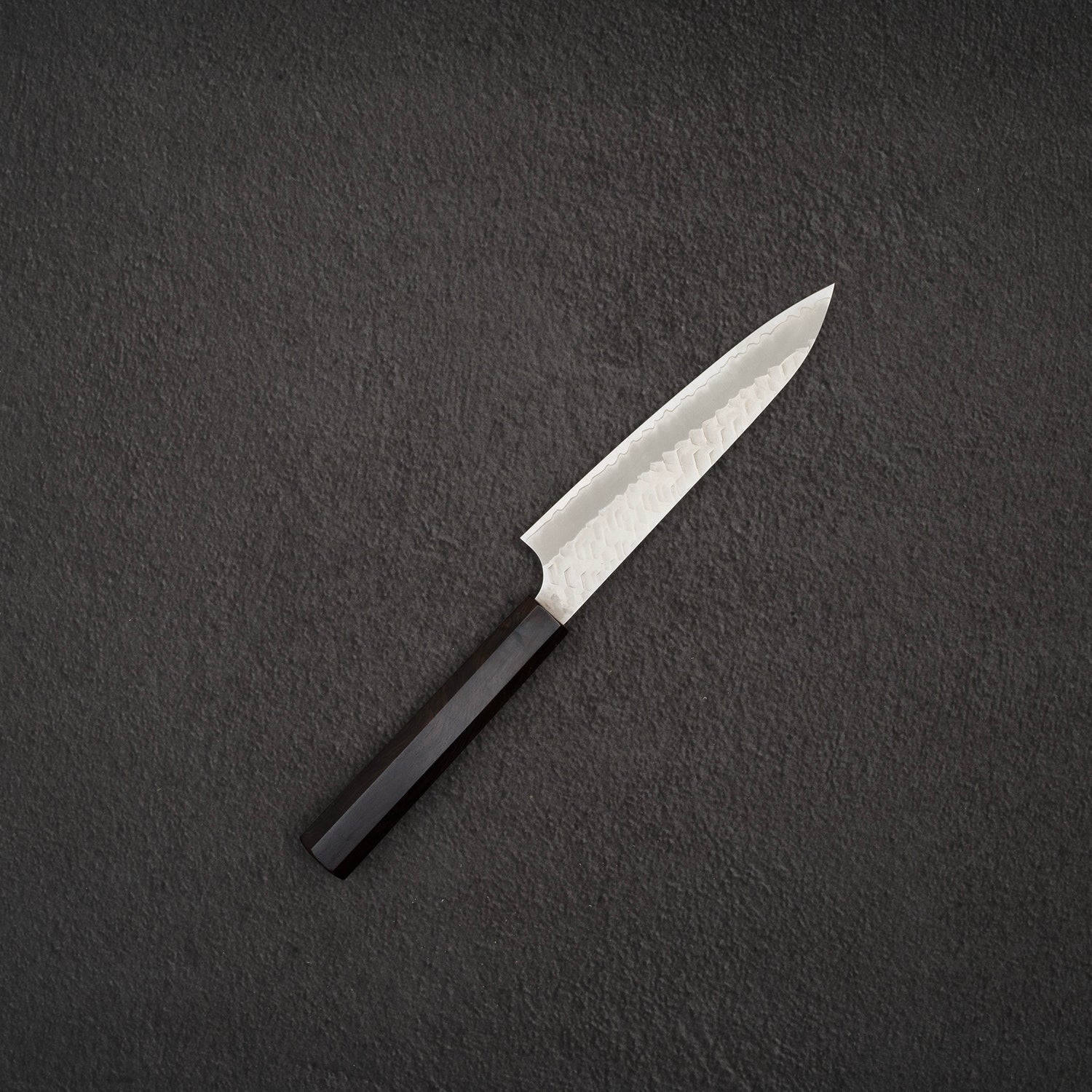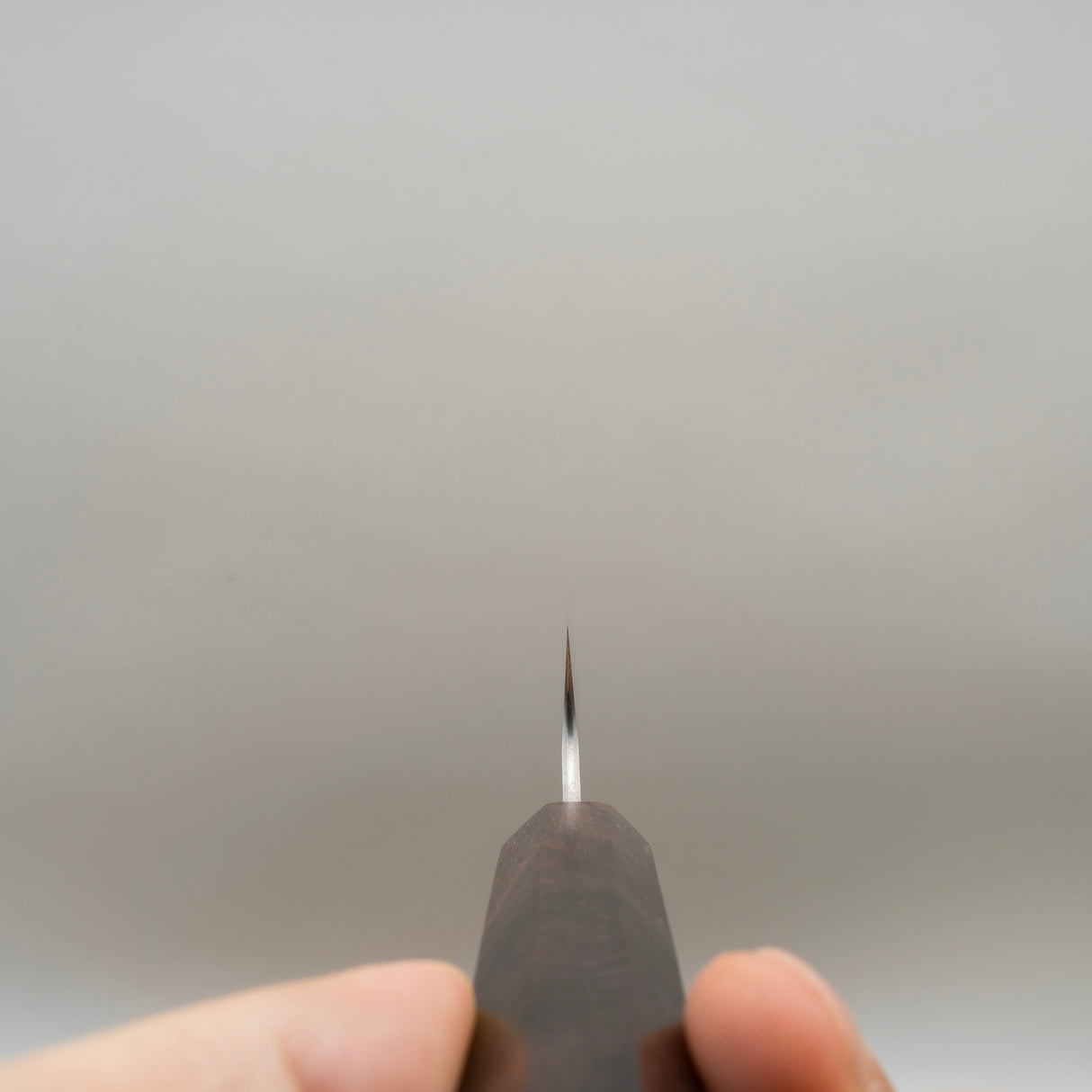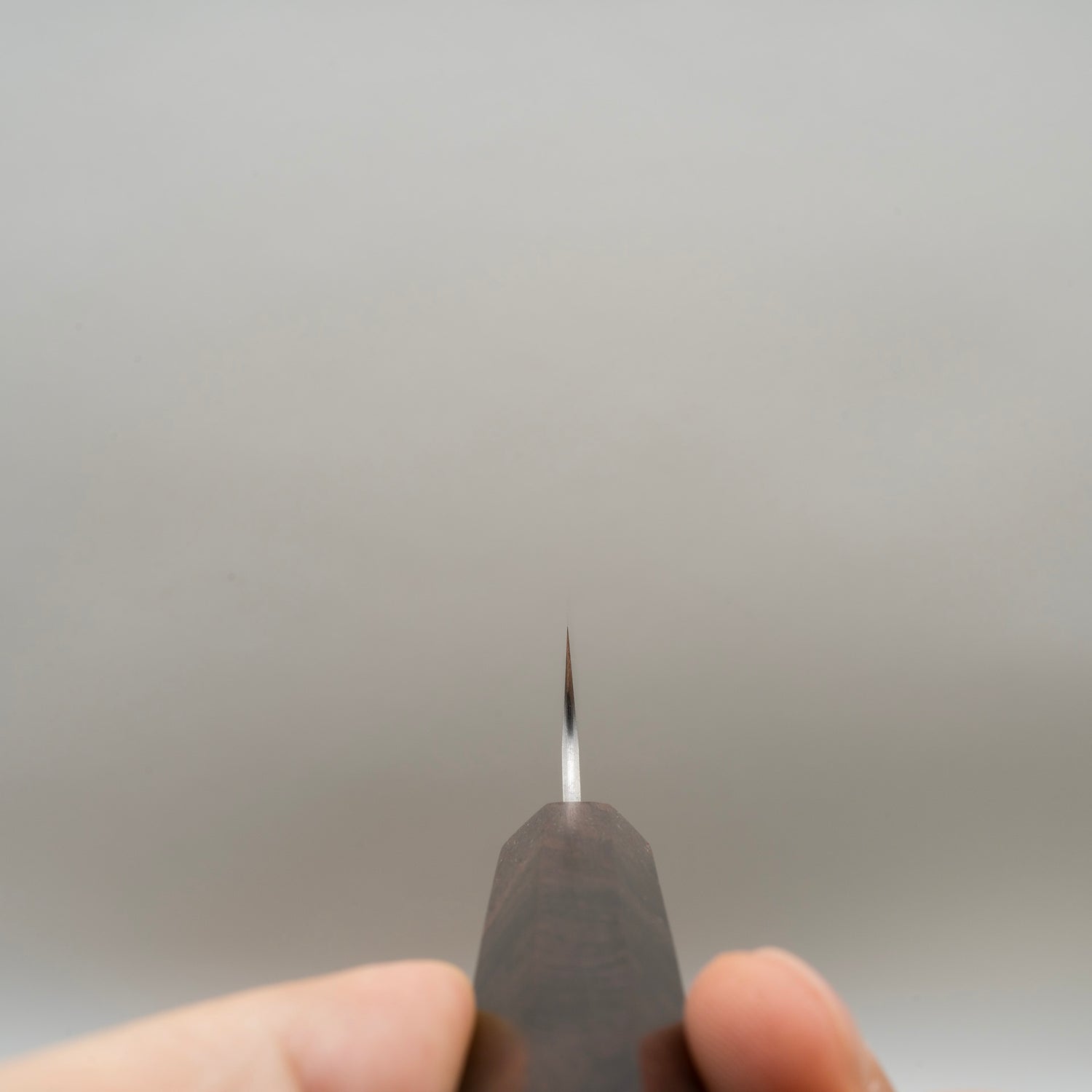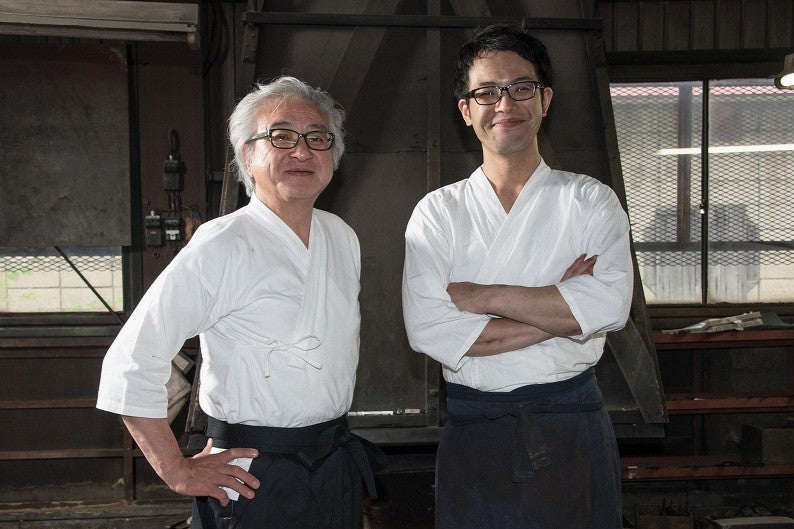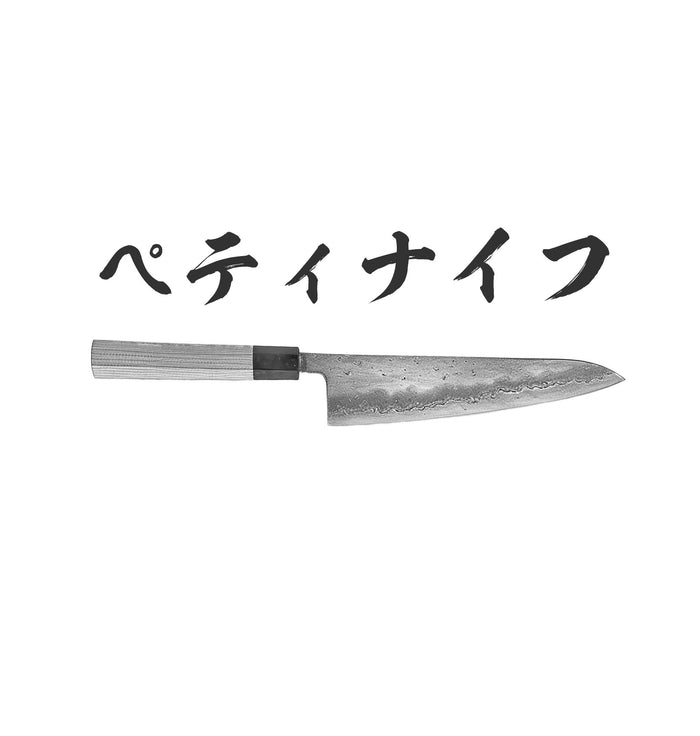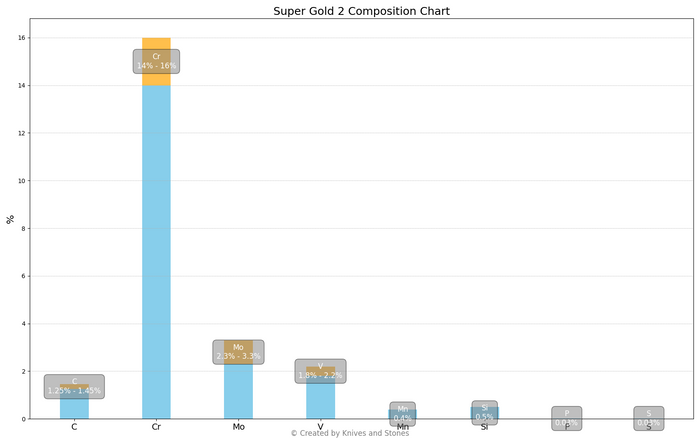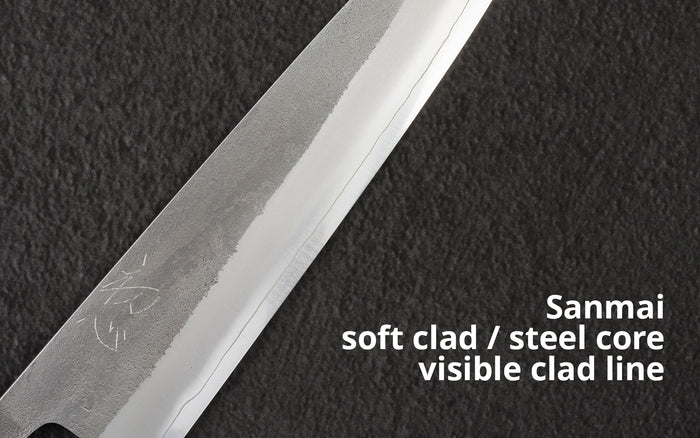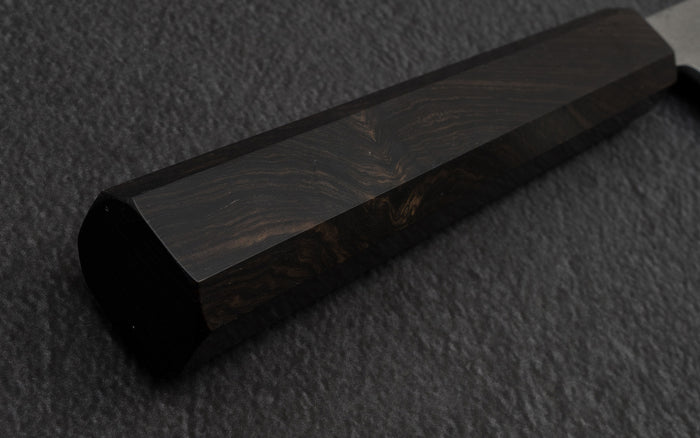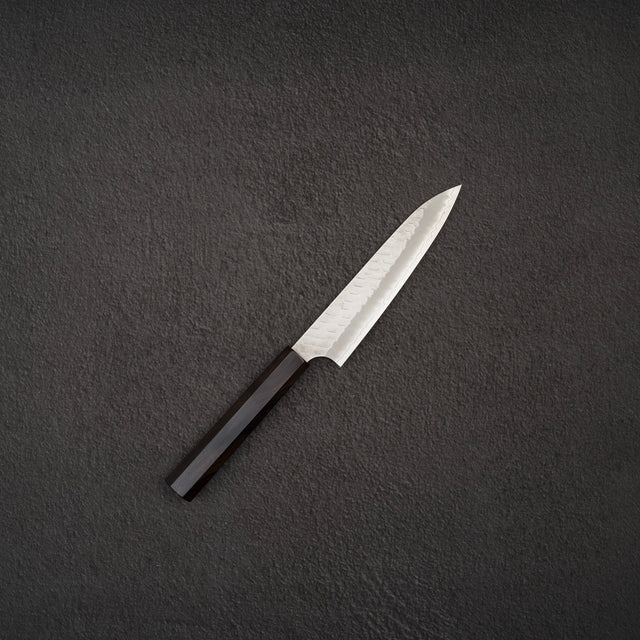Nigara | SKU:
NIGA_SGHA_PE150
Nigara SG2 Matt Migaki Tsuchime Petty 150mm
$299.95
Unit price
/
Unavailable
Nigara SG2 Matt Migaki Tsuchime Petty 150mm is backordered and will ship as soon as it is back in stock.
Couldn't load pickup availability
Detailed Specifications
| Line | Nigara SG2 Matt Migaki Tsuchime |
| Profile | Petty / Utility, Paring |
| Bevel Type | Double Bevel |
| Weight | 84 g 2.96 oz |
| Edge Length | 141 mm .5.55 inch |
| Heel Height | 32 mm .1.26 inch |
| Width @ Spine | 1.8 mm 0.07 inch |
| Width @ Mid | 1.7 mm 0.07 inch |
| Width @ 1cm from Tip | 1.0 mm 0.04 inch |
| Steel | SG2 / R2 | Powdered Stainless |
| Blade Construction | Sanmai - Stainless Clad |
| Hardness (HRC) | 62 - 64 |
| Handle | Octagonal Ebony |
| Region | Aomori |
| Best for |
|

| Pros | Cons |
|
|
|
Care Instruction
- Don't cut hard things! Japanese knives are brittle so bone hacking is a NO NO!
- Wash with neutral detergent after use, and wipe dry;
- Please don't wash knife with dishwasher, it will damage the wood handle;
- Be careful not to leave the knife close to a heat source for a long time;
- It is a lot more dangerous to cut with a blunt knife than a sharp knife!
- It is best to sharpen a Japanese knife regularly on a waterstone.

